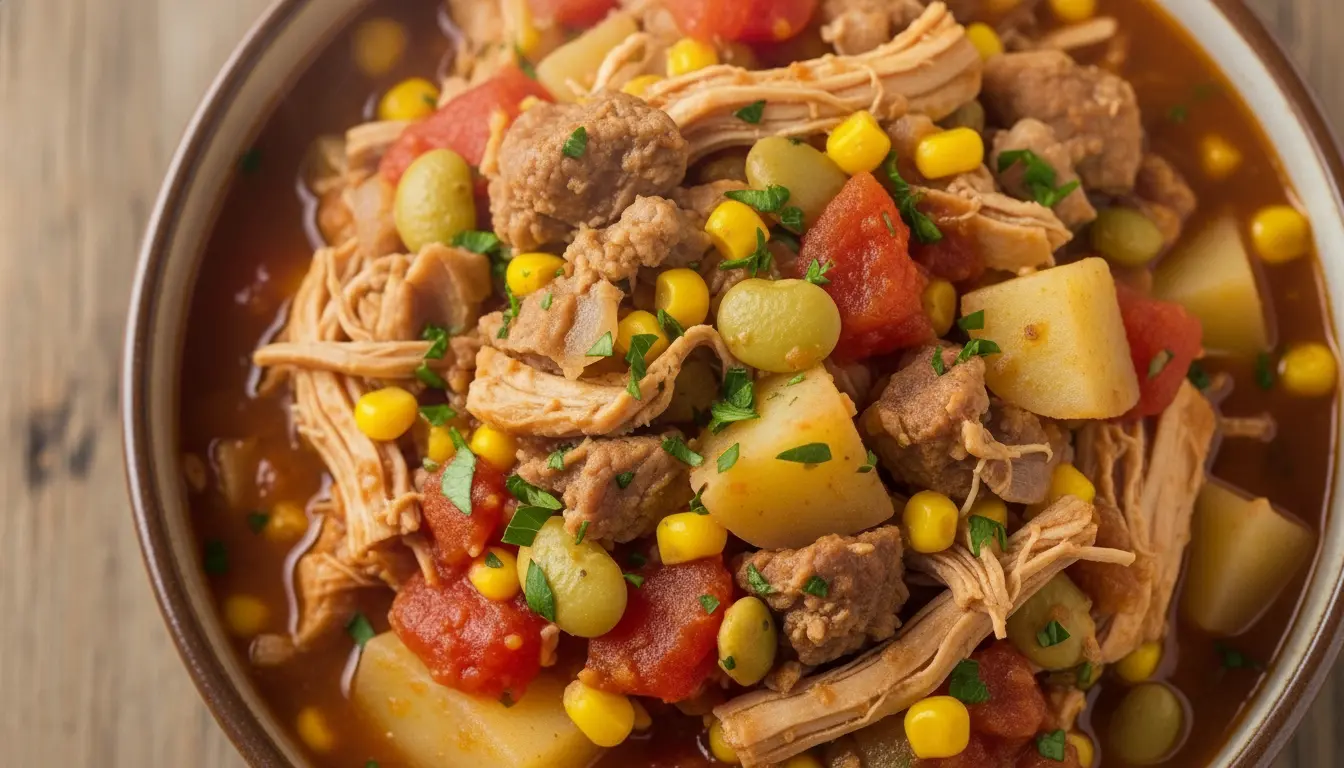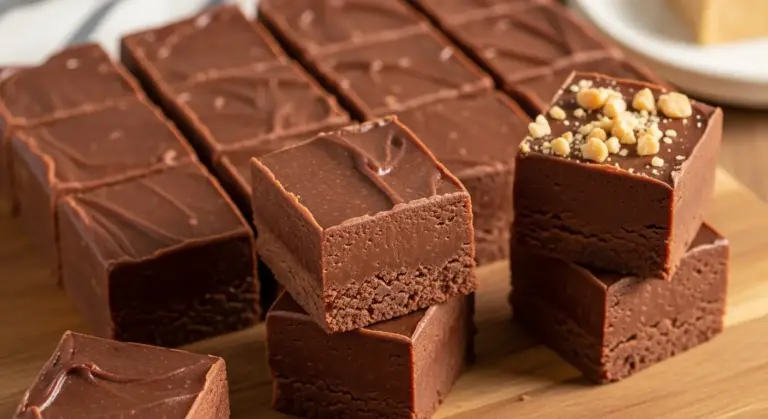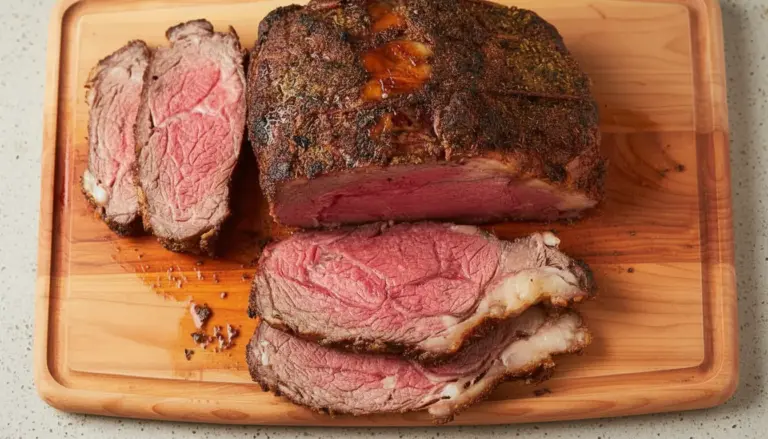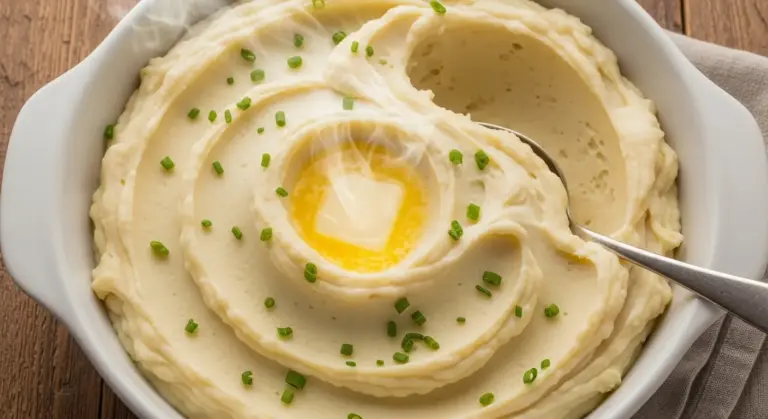I grew up in North Carolina, where debates about the “true” Brunswick stew recipe could get surprisingly heated at church potlucks. My grandmother’s version always won people over, though, and after years of tweaking her base recipe, I’ve landed on this Brunswick stew recipe that’s become my go-to for feeding a crowd.
This isn’t one of those stews you throw together in 30 minutes. Brunswick stew demands time and patience, but the payoff is a thick, smoky, satisfying bowl that tastes like comfort in every spoonful.
The first time I made it on my own, I drastically underestimated how long it needed to simmer. I served it after just an hour, and while it was edible, it lacked that deep, melded-together flavor that makes Brunswick stew special. Now I know better: low and slow is the only way.
| Quick Recipe Summary | |
|---|---|
| Prep Time | 30 minutes |
| Cook Time | 3 hours 30 minutes |
| Total Time | 4 hours |
| Servings | 12 servings |
| Difficulty Level | Medium |

Why You’ll Love This Brunswick Stew Recipe
This stew has everything going for it. It’s hearty, economical, and incredibly forgiving if you need to swap ingredients based on what’s in your pantry.
The combination of chicken and pork gives you layers of flavor that a single meat just can’t achieve. I’ve tried making it with only chicken, and while it was good, it lacked the richness that the pork brings to the party.
Here’s what makes this recipe stand out:
- Multiple proteins create depth: The chicken provides lean meat while the pork adds richness and body
- Vegetables thicken naturally: Long simmering breaks down the potatoes and corn, creating a thick, almost gravy-like consistency without any flour or cornstarch
- Smoky complexity: A touch of liquid smoke gives you that authentic barbecue flavor without needing an outdoor smoker
- Freezer-friendly: This stew actually improves after a day or two, and it freezes beautifully for up to three months
- Budget-smart: Uses affordable cuts of meat and pantry staples to feed a crowd without breaking the bank
- Customizable heat: You control the spice level, making it family-friendly or adding extra kick for heat lovers
Another favorite comfort food: Slow Cooker Chili Recipe
Ingredients
This recipe calls for a mix of proteins, vegetables, and pantry staples that come together into something much greater than the sum of their parts. I always use bone-in chicken thighs because they stay moist during the long cooking time and add more flavor to the broth than boneless cuts.
Proteins:
- 2 lbs (900g) bone-in chicken thighs
- 1 lb (450g) pork shoulder, cut into 1-inch cubes
- 6 cups (1.4L) chicken broth (homemade or store-bought)
Vegetables:
- 2 medium onions, diced (about 2 cups/300g)
- 3 cloves garlic, minced
- 28 oz (800g) crushed tomatoes (one large can)
- 3 medium potatoes, peeled and diced (about 3 cups/450g)
- 2 cups (300g) frozen lima beans
- 2 cups (300g) frozen corn kernels
- 1 cup (240ml) ketchup
Seasonings:
- 2 tablespoons Worcestershire sauce
- 2 tablespoons apple cider vinegar
- 2 tablespoons brown sugar
- 1 tablespoon liquid smoke
- 1 teaspoon smoked paprika
- 1 teaspoon dried thyme
- 1/2 teaspoon cayenne pepper (adjust to taste)
- 2 bay leaves
- Salt and black pepper to taste
- 2 tablespoons butter
Kitchen Equipment Needed
Having the right equipment makes the cooking process smoother, though Brunswick stew is forgiving enough that you can work with what you have. I learned the hard way that a thin-bottomed pot will lead to scorching on the bottom, so invest in something heavy.
Essential equipment:
- Large heavy-bottomed pot or Dutch oven (at least 8-quart/7.5L capacity)
- Sharp chef’s knife for chopping vegetables and meat
- Cutting board
- Wooden spoon or heat-resistant spatula for stirring
- Measuring cups and spoons
- Large slotted spoon for removing chicken
- Two forks for shredding meat
- Ladle for serving
Optional but helpful:
- Immersion blender (if you prefer a smoother consistency)
- Large bowl for holding shredded meat
- Kitchen tongs for handling hot chicken
Recommended Products for This Recipe
After making Brunswick stew more times than I can count, I’ve found a few products that genuinely make the process easier and improve the final result.
1. Le Creuset Enameled Cast Iron Dutch Oven
This pot distributes heat evenly and prevents hot spots that can burn the bottom of your stew during those long simmering hours. The heavy lid traps moisture perfectly, and the enameled interior makes cleanup surprisingly easy despite the thick, stick-prone nature of Brunswick stew. I’ve had mine for over a decade, and it’s still my go-to for any long-cooked dish.
2. Wright’s Liquid Smoke
The flavor from this particular brand is balanced and not overpowering, which is crucial since liquid smoke can easily dominate a dish. A little goes a long way, and one bottle will last you through dozens of batches. It’s the secret to achieving that authentic smoky barbecue taste without firing up a smoker.
3. KitchenAid Immersion Blender
While traditional Brunswick stew has a chunky texture, I like to blend just a small portion of the vegetables to create an even thicker base. This immersion blender makes it easy to do a quick pulse right in the pot without transferring anything. It’s also fantastic for soups and sauces year-round.
4. Premium Bone-In Chicken Thighs
Quality matters here. Organic, free-range chicken thighs have more flavor and better texture than conventional options. The bones and skin add richness to the broth that you just can’t get from boneless, skinless cuts. It’s worth spending a bit more for noticeably better results.
You might also enjoy: Beef Barley Soup Recipe
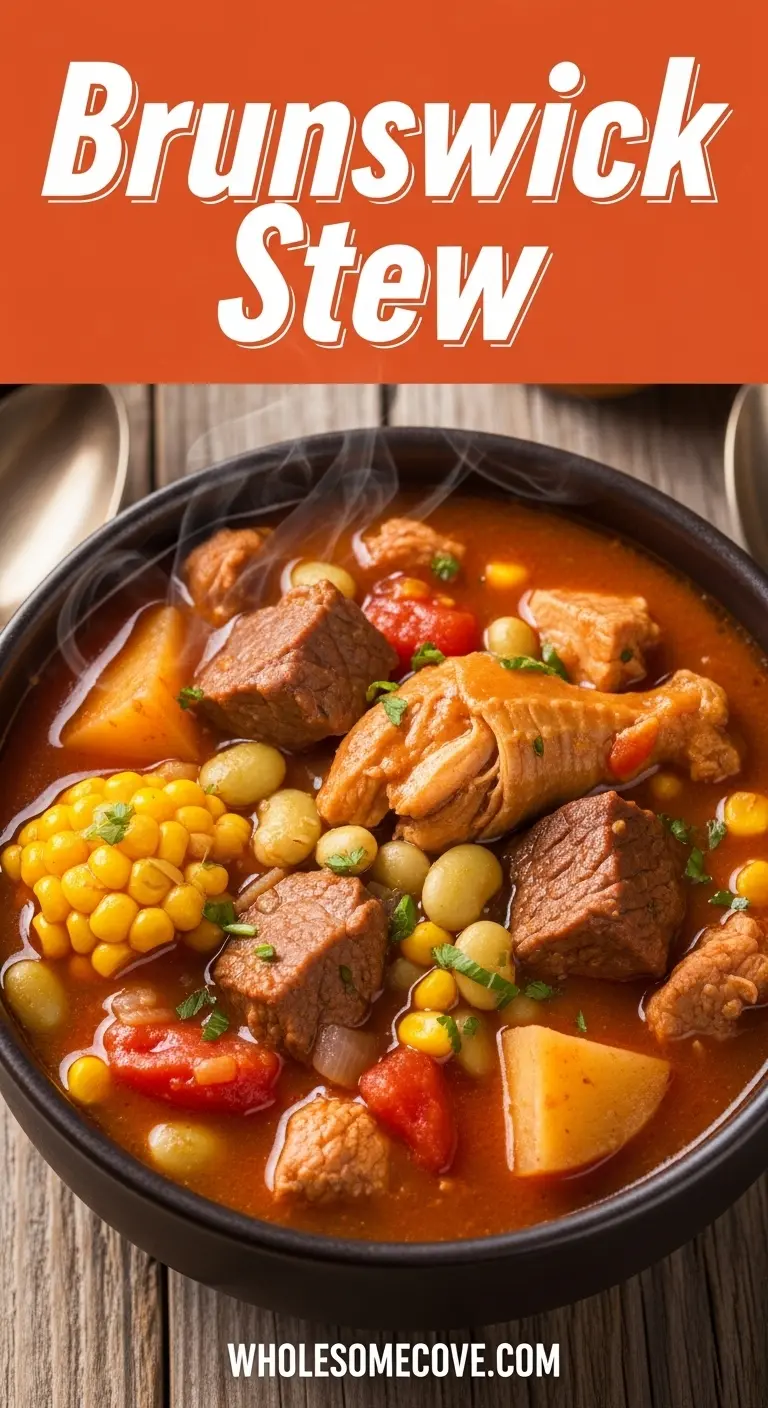
Step-by-Step Instructions: How to Make Brunswick Stew
These detailed instructions will walk you through every stage of building flavor in your Brunswick stew. Take your time with each step, especially the simmering phase.
1. Prepare and Brown the Meats
- Heat your Dutch oven over medium-high heat and add 1 tablespoon of butter
- Season the chicken thighs generously with salt and black pepper on both sides
- Place the chicken thighs skin-side down in the hot pot, working in batches if necessary to avoid crowding
- Brown for 5-6 minutes per side until the skin is golden and crispy
- Remove the chicken to a plate and set aside (it doesn’t need to be cooked through yet)
- Add the cubed pork shoulder to the same pot without cleaning it (you want those browned bits)
- Brown the pork on all sides for about 6-8 minutes total, stirring occasionally
- Remove the pork and set aside with the chicken
2. Build the Flavor Base
- Reduce heat to medium and add the remaining tablespoon of butter to the pot
- Add the diced onions and cook for 5-7 minutes, stirring occasionally, until they’re softened and translucent
- Scrape up any browned bits from the bottom of the pot with your wooden spoon (this is pure flavor)
- Add the minced garlic and cook for 1 minute, stirring constantly so it doesn’t burn
- The garlic should smell fragrant but not develop any color
3. Add Tomatoes and Liquids
- Pour in the crushed tomatoes, stirring to combine with the onion mixture
- Add the chicken broth, Worcestershire sauce, apple cider vinegar, and liquid smoke
- Stir in the brown sugar, smoked paprika, dried thyme, cayenne pepper, and bay leaves
- Bring the mixture to a boil over medium-high heat
- Once boiling, reduce heat to low and return the chicken thighs and pork cubes to the pot
- Make sure the meats are mostly submerged in the liquid
- Cover and simmer for 1.5 hours, stirring occasionally to prevent sticking
4. Shred the Chicken
- After 1.5 hours, carefully remove the chicken thighs with a slotted spoon or tongs
- Place them on a cutting board and let them cool for 5-10 minutes until you can handle them safely
- Remove and discard the skin and bones
- Shred the chicken meat into bite-sized pieces using two forks
- Set the shredded chicken aside in a bowl
- The pork should remain in the pot to continue cooking
5. Add Vegetables and Thicken
- Add the diced potatoes, lima beans, and corn to the pot
- Stir in the ketchup, which adds both sweetness and helps thicken the stew
- Return the shredded chicken to the pot
- Bring the stew back to a gentle simmer
- Cook uncovered for 1.5 to 2 hours, stirring every 15-20 minutes
- The stew should reduce and thicken considerably during this time
- If it’s thickening too quickly or sticking to the bottom, reduce the heat and stir more frequently
- The potatoes will begin to break down, which naturally thickens the stew
6. Final Seasoning and Serving
- Taste the stew and adjust seasoning with salt, pepper, or additional cayenne if you want more heat
- Remove and discard the bay leaves
- For an even thicker consistency, use an immersion blender to puree about 2 cups of the stew right in the pot, then stir it back in
- Let the stew rest for 10-15 minutes before serving (this allows the flavors to settle)
- Ladle into bowls and serve hot
This pairs beautifully with my healthy cornbread for a complete Southern meal.

Tips for The Best Brunswick Stew
These are the hard-won lessons I’ve learned from making Brunswick stew dozens of times. Following these tips will help you avoid common mistakes and create the best possible result.
Key techniques for success:
- Don’t rush the browning: Taking time to properly sear the meat creates a foundation of flavor that permeates the entire stew. Those caramelized bits stuck to the pot are flavor gold.
- Stir regularly during the final simmer: Once you add the vegetables, the stew becomes thick and can easily scorch on the bottom. Set a timer to remind yourself to stir every 15-20 minutes.
- Use bone-in, skin-on chicken: The bones add body and richness to the broth, while the skin adds fat that makes the stew more satisfying. Boneless, skinless chicken breasts will dry out and lack flavor.
- Adjust consistency with broth: If your stew gets too thick before the flavors have fully developed, add more chicken broth in 1/2 cup increments. If it’s too thin at the end, simmer uncovered longer.
- Taste and adjust throughout: Brunswick stew should have a balance of smoky, sweet, tangy, and savory flavors. Taste after each major step and adjust seasonings as needed.
- Let it rest before serving: Like many stews and chilis, Brunswick stew benefits from sitting for 10-15 minutes after cooking. The flavors meld and the consistency stabilizes.
- Make it ahead: This stew tastes even better the next day. The flavors deepen overnight, and reheating is simple.
- Control the heat level: Start with less cayenne than you think you need. You can always add more at the end, but you can’t take it out.
- Don’t skip the vinegar: The apple cider vinegar brightens all the other flavors and cuts through the richness. It’s a small amount but makes a big difference.
Read Also: Cheeseburger Soup Recipe
Serving Suggestions
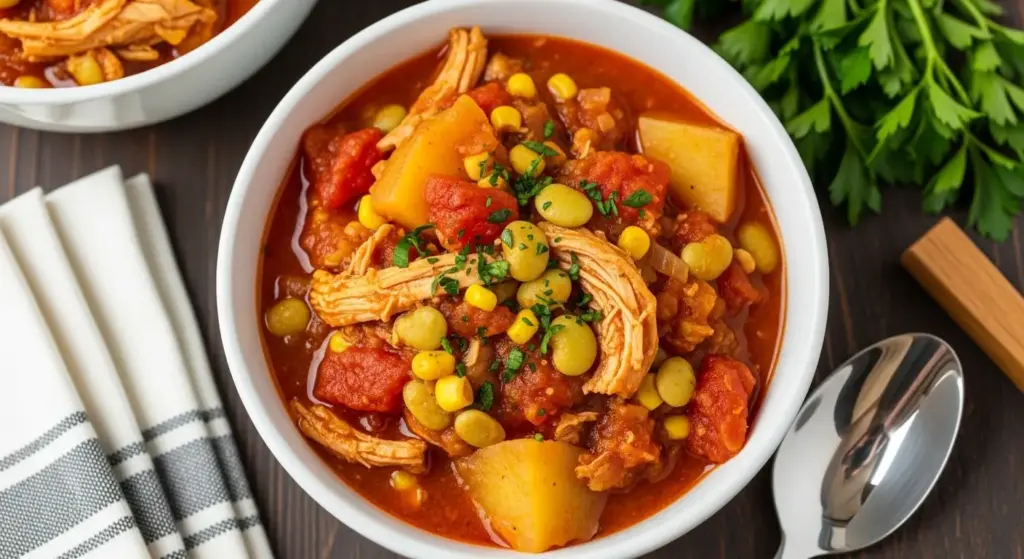
Brunswick stew is hearty enough to stand alone as a complete meal, but the right accompaniments can elevate it even further. Here are my favorite ways to serve it.
Classic pairings:
- Fresh cornbread or jiffy spoon bread for soaking up the thick broth
- Simple coleslaw to add crunch and acidity
- Saltine crackers crumbled on top (a Southern tradition)
- Sliced avocado for creaminess and healthy fats
- Hot sauce on the side for those who want extra heat
- Deviled eggs as a protein-rich side
- Pickled okra or pickled jalapeños for tang
- Fresh green salad with a light vinaigrette to balance the richness
This stew works wonderfully at potlucks, tailgates, and family gatherings. I like to serve it buffet-style with the toppings on the side so everyone can customize their bowl.
Another favorite: Lentil and Vegetable Soup Recipe
Variations of Brunswick Stew
One of the things I love about Brunswick stew is how adaptable it is. Different regions and families have their own takes, and you can make it your own too.
Regional and dietary variations:
- Georgia-style: Add more barbecue sauce and reduce the tomatoes for a sweeter, smokier version
- Virginia-style: Use pulled chicken instead of shredded thighs and add more vegetables
- Turkey version: Substitute turkey thighs for the chicken and use turkey broth for a leaner option
- Slow cooker adaptation: Brown the meats first, then transfer everything to a slow cooker and cook on low for 8-10 hours
- Pressure cooker/Instant Pot: Brown meats using the sauté function, then pressure cook on high for 35 minutes followed by natural release
- Extra-spicy: Double the cayenne and add diced jalapeños or a few dashes of hot sauce
- Sweeter version: Increase the brown sugar to 3 tablespoons and add a splash of bourbon
- Vegetarian base: Skip the meats and use vegetable broth, adding extra beans and mushrooms for heartiness
- Game meat: Replace the pork with venison or rabbit for a more traditional, rustic flavor
- Thick versus soupy: For a thicker stew, mash some of the potatoes against the side of the pot; for soupier, add an extra cup of broth
- Bean variations: Swap lima beans for butter beans, kidney beans, or even black-eyed peas
You might also enjoy: Taco Casserole Recipe
Storage and Reheating
Brunswick stew is one of those magical dishes that actually improves with time. The flavors continue to develop in the refrigerator, making leftovers even better than the first serving.
Proper storage methods:
- Refrigerator storage: Let the stew cool to room temperature, then transfer to airtight containers. Store for up to 4 days in the refrigerator. The stew will thicken considerably when cold, which is normal.
- Freezer storage: Cool completely and portion into freezer-safe containers, leaving 1 inch of headspace for expansion. Freeze for up to 3 months. Label containers with the date and contents.
- Portioning tip: Freeze in individual or family-sized portions so you can thaw only what you need. Muffin tins or small containers work great for single servings.
- Reheating from refrigerated: Warm gently on the stovetop over medium-low heat, stirring occasionally. Add a splash of chicken broth or water to thin if needed, as the stew will have thickened overnight. Heat until steaming throughout, about 10-15 minutes.
- Reheating from frozen: Thaw overnight in the refrigerator, then reheat on the stovetop. You can also reheat from frozen by placing the container in a pot of simmering water or defrosting in the microwave first.
- Microwave reheating: Transfer to a microwave-safe bowl, cover loosely, and heat on 50% power in 2-minute intervals, stirring between each, until hot throughout.
- Avoid repeated reheating: Only reheat the amount you plan to eat. Repeated heating and cooling can affect texture and food safety.
Read Also: Lasagna Soup Recipe
Nutritional Facts
Brunswick stew is surprisingly nutritious for such a hearty, comfort-food dish. It’s loaded with protein, vegetables, and fiber while still feeling indulgent.
Per serving (based on 12 servings):
- Calories: 385
- Protein: 28g
- Carbohydrates: 38g
- Dietary Fiber: 6g
- Sugars: 12g
- Fat: 13g
- Saturated Fat: 4g
- Cholesterol: 75mg
- Sodium: 890mg
- Potassium: 845mg
- Vitamin A: 18% DV
- Vitamin C: 35% DV
- Calcium: 8% DV
- Iron: 20% DV
Nutritional highlights:
The high protein content from the chicken and pork makes this stew incredibly satisfying and helps with muscle maintenance and recovery. The combination of lima beans and corn provides both soluble and insoluble fiber, supporting digestive health and helping you feel full longer.
The tomatoes contribute lycopene, a powerful antioxidant linked to heart health. Potatoes add potassium, which is essential for heart and muscle function.
While the sodium content is moderate, much of it comes from the broth and can be reduced by using low-sodium options. The fat content is reasonable for such a hearty dish, and much of it comes from the proteins rather than added oils.
Health Benefits of Key Ingredients
Beyond just being delicious, Brunswick stew packs some impressive nutritional benefits thanks to its variety of wholesome ingredients.
Notable health advantages:
- Chicken thighs: Provide high-quality protein, B vitamins (especially niacin and B6), selenium for immune function, and zinc for wound healing. Dark meat contains more iron than breast meat.
- Pork shoulder: Offers complete protein, thiamine for energy metabolism, phosphorus for bone health, and selenium. Despite its reputation, pork is relatively lean when trimmed properly.
- Lima beans: Excellent source of plant-based protein, fiber for digestive health, folate for cell growth, manganese for bone development, and resistant starch that feeds beneficial gut bacteria.
- Corn: Contains lutein and zeaxanthin for eye health, provides fiber, offers B vitamins for energy production, and supplies antioxidants. Contrary to popular belief, corn is a whole grain with real nutritional value.
- Tomatoes: Rich in lycopene (especially when cooked), vitamin C for immune support, potassium for blood pressure regulation, and vitamin K for bone health. Cooking tomatoes actually increases the bioavailability of lycopene.
- Potatoes: Often maligned unfairly, potatoes provide resistant starch, vitamin C, potassium (more than bananas), vitamin B6, and antioxidants. The key is eating them with the skin when possible and in the context of a balanced meal.
- Onions and garlic: Both contain sulfur compounds with anti-inflammatory properties, support heart health, may have antimicrobial effects, and provide quercetin, an antioxidant.
This stew is particularly good for cold weather, as the warm, protein-rich meal helps maintain body temperature and provides sustained energy. The combination of protein, complex carbohydrates, and fiber creates a balanced meal that keeps blood sugar stable and hunger at bay for hours.
Another favorite: Creamy Tomato Basil Soup Recipe
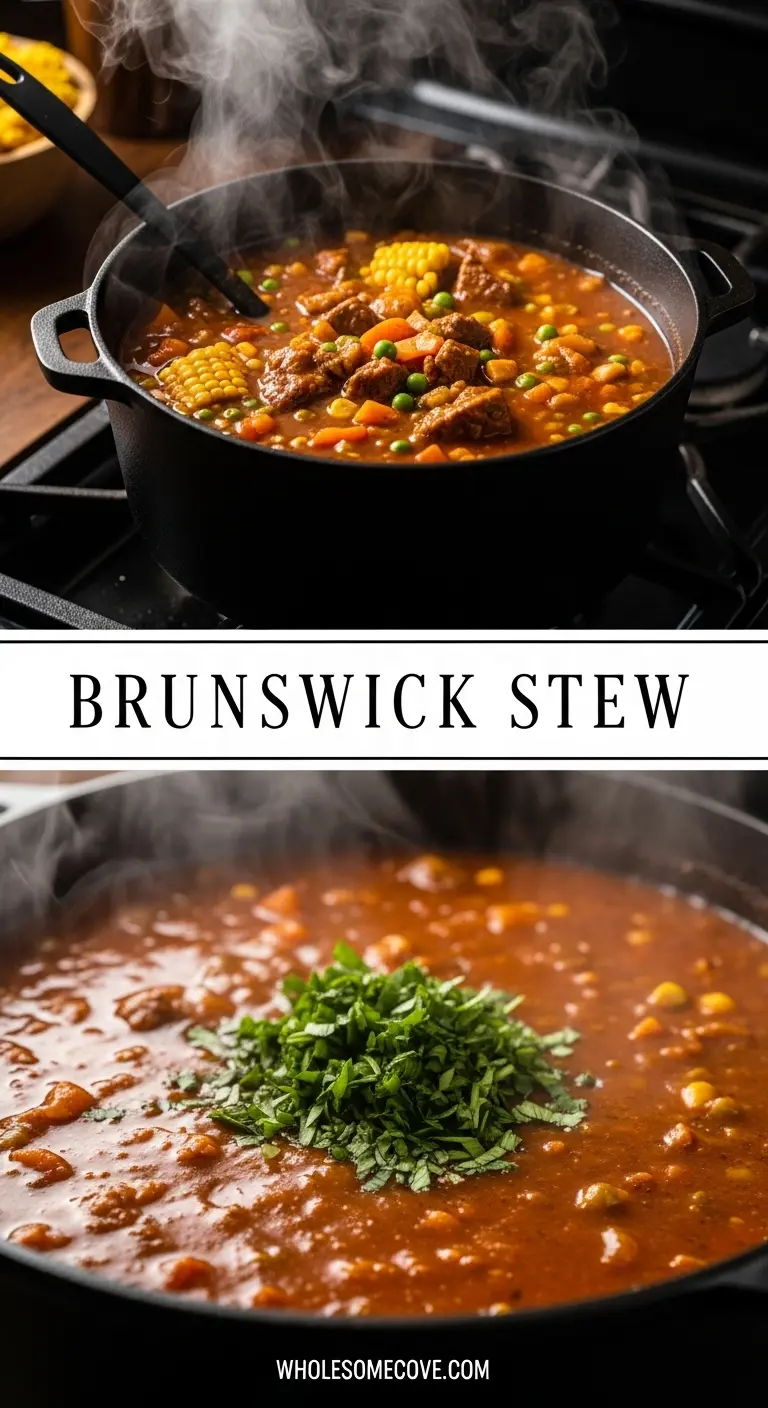
FAQs About Brunswick Stew
1. What’s the difference between Brunswick stew and burgoo?
Brunswick stew and burgoo are cousins, both being thick, multi-meat stews from the American South, but they have distinct differences. Brunswick stew originated in the Southeast (with both Georgia and Virginia claiming credit) and traditionally uses chicken and pork or rabbit with a tomato base.
Burgoo comes from Kentucky and typically includes more types of meat (sometimes beef, lamb, or even game) and a wider variety of vegetables. Burgoo also tends to be thinner and more soup-like, while Brunswick stew is characteristically thick, almost like a very hearty chili.
2. Can I make Brunswick stew without pork?
Absolutely. You can use all chicken if you prefer, though you’ll lose some of the richness that pork brings.
For the best flavor when omitting pork, increase the chicken to 3 pounds total and consider adding a few strips of cooked, crumbled bacon for that smoky, fatty element. You could also add a ham hock to the initial simmer, then remove it before adding vegetables.
3. Why is my Brunswick stew too thin?
The most common reason is not simmering long enough in the final stage. After adding the vegetables, the stew needs at least 1.5 to 2 hours of uncovered simmering to reduce and thicken properly.
The potatoes should partially break down, and the liquid should reduce by about one-third. If you’re short on time, you can thicken it by mashing some of the potatoes against the side of the pot or by mixing 2 tablespoons of cornstarch with 2 tablespoons of water and stirring that in during the last 15 minutes of cooking.
4. Can I use boneless chicken instead of bone-in?
You can, but the stew won’t be as flavorful or as rich. Bones add body and depth to the broth that boneless cuts simply can’t provide.
If you must use boneless chicken, consider adding a few chicken wings or a chicken carcass to the initial simmer for flavor, then removing them before shredding the meat. Also, be careful not to overcook boneless chicken, as it can dry out more easily than bone-in thighs.
5. What can I substitute for lima beans?
Butter beans are the closest substitute and are actually considered the same species as lima beans, just at a different stage of maturity. Other good options include navy beans, cannellini beans, or great northern beans.
In a pinch, you could use black-eyed peas, though they’ll change the flavor profile slightly. Whatever you choose, if using dried beans instead of frozen, soak and cook them according to package directions before adding to the stew.
Read Also: French Onion Beef Short Rib Soup Recipe
Final Thoughts
Brunswick stew is more than just food. It’s a connection to Southern tradition, a way to feed people you care about, and a reminder that the best things in life take time.
Every time I make a big pot of this stew, I think about my grandmother stirring her version in a cast iron pot, patiently tending to it for hours while we played in the yard. That patience and care are what make this dish special.
I hope this recipe becomes a favorite in your home the way it has in mine. Don’t be intimidated by the long cooking time – most of it is hands-off simmering, and the result is absolutely worth it.
Make it for a Sunday dinner, freeze some for busy weeknights, or bring it to your next gathering. I’d love to hear how yours turns out, especially any personal tweaks you make to suit your family’s tastes. Drop a comment below and share your Brunswick stew experience!
Recommended:
- Meatloaf Recipe
- Chicken Spaghetti Recipe
- Sloppy Joe Recipe
- Stuffed Shells Recipe
- Marry Me Chicken Soup Recipe
- Chicken Parmesan Recipe
- BBQ Pulled Pork Sandwiches
- Easy Chicken Noodle Soup Recipe
- Instant Pot Chicken Noodle Soup Recipe
- Panera Broccoli Cheddar Soup Recipe

